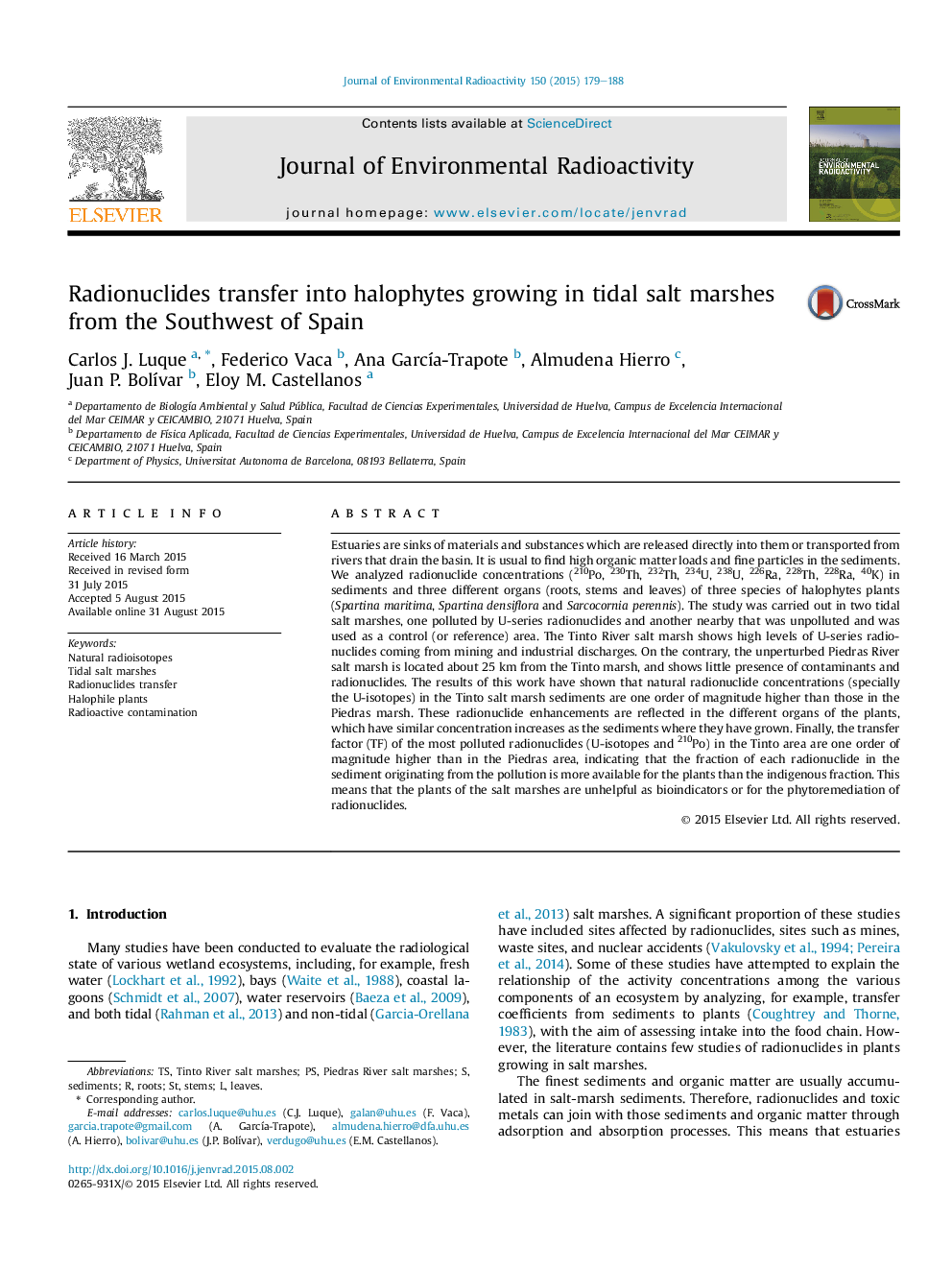| کد مقاله | کد نشریه | سال انتشار | مقاله انگلیسی | نسخه تمام متن |
|---|---|---|---|---|
| 1737801 | 1521583 | 2015 | 10 صفحه PDF | دانلود رایگان |
• Radionuclides were analyzed in sediments and plants in unpolluted salt marshes.
• Plants uptake radionuclides in all organs in both salt marshes.
• The transfer factors between sediments and plant organs are variables.
• There is a certain relation to zonation spatial distribution pattern and species.
• Halophile plants are not suitable as bioindicators nor phytoremediation.
Estuaries are sinks of materials and substances which are released directly into them or transported from rivers that drain the basin. It is usual to find high organic matter loads and fine particles in the sediments. We analyzed radionuclide concentrations (210Po, 230Th, 232Th, 234U, 238U, 226Ra, 228Th, 228Ra, 40K) in sediments and three different organs (roots, stems and leaves) of three species of halophytes plants (Spartina maritima, Spartina densiflora and Sarcocornia perennis). The study was carried out in two tidal salt marshes, one polluted by U-series radionuclides and another nearby that was unpolluted and was used as a control (or reference) area. The Tinto River salt marsh shows high levels of U-series radionuclides coming from mining and industrial discharges. On the contrary, the unperturbed Piedras River salt marsh is located about 25 km from the Tinto marsh, and shows little presence of contaminants and radionuclides. The results of this work have shown that natural radionuclide concentrations (specially the U-isotopes) in the Tinto salt marsh sediments are one order of magnitude higher than those in the Piedras marsh. These radionuclide enhancements are reflected in the different organs of the plants, which have similar concentration increases as the sediments where they have grown. Finally, the transfer factor (TF) of the most polluted radionuclides (U-isotopes and 210Po) in the Tinto area are one order of magnitude higher than in the Piedras area, indicating that the fraction of each radionuclide in the sediment originating from the pollution is more available for the plants than the indigenous fraction. This means that the plants of the salt marshes are unhelpful as bioindicators or for the phytoremediation of radionuclides.
Journal: Journal of Environmental Radioactivity - Volume 150, December 2015, Pages 179–188
